
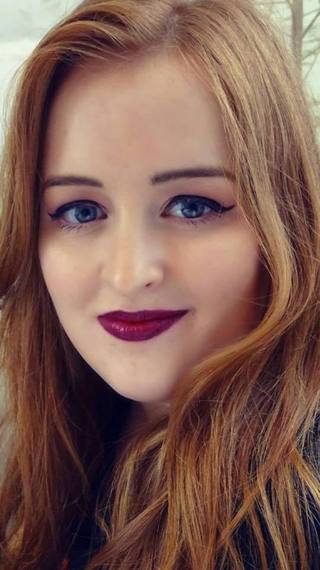
"But You Don't Look Blind!"
Out of all the things I hear on a day to day basis, this is above all one of the most frequent comments I receive. It's a social enigma and one that, for me, seems to be entrenched in a huge amount of misconception that people with sight loss do not have a relationship to fashion or style.
My name is Emily Davison, I'm a writer and in my spare time I'm a fashion blogger, who also happens to be registered as severely sight impaired. I have lived with sight loss since birth from a condition known as Septo Optic Dysplasia which damaged my optic nerves causing me to have no vision in my right eye and severe vision loss in my left. I now work with a guide dog by the name of Unity and live a relatively normal adult life.

I began fashion blogging in 2012 when I created my own fashion and lifestyle blog under the name Fashioneyesta. I created this blog after I'd received a lot of comments over my fashion sense and that people were so incredulous that someone with sight loss could take a interest in fashion and beauty. I wanted to create an online space to discuss the myths that surround disability, but at the same time talk about things like trends, beauty and style in an accessible way for both those with or without sight could enjoy. I believed and still do believe that the fashion industry does not embrace disability nearly as much as it should and so I wanted to be a presence online and to speak for the visual impairment community in the area of fashion.
I wanted to prove that being disabled doesn't define you, I opted to talk about topics like fashion, trends and beauty to highlight that having a disability doesn't prevent you from adopting everyday interests or enjoying similar activities to those who may not have a disability.
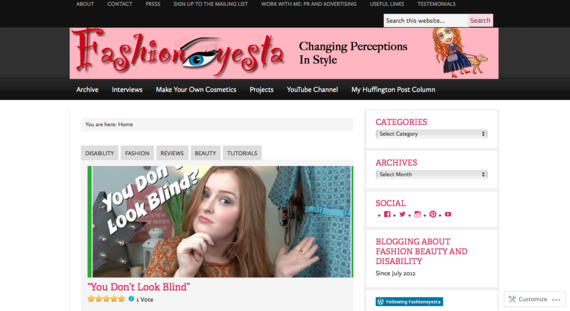
It's a common myth in society that many of my readers have had similar experiences with that people with sight loss do not have an interest or a grasp on fashion and how to style themselves.
"It's as if people automatically think that someone with limited sight is excluded from the fashion and beauty scene," comments one of my readers. "Just because I don't have a lot of sight doesn't mean I can't apply eyeliner or wear a floral print dress. It's important to look good even if you can't see yourself. I want to be able to get a job, go out on dates and do all the things that people with sight do and looking good is part of that process."
One of the messages I promote on my blog is that fashion is more than something we perceive with our eyes, it appeals to many of our senses. Fashion is more than a visual concept, it's language and a form of expression and it's tangible. It uses textiles, different fabrics, embroidery, different cuts and stitches. It's something you feel, smell and, in some cases, hear as much as it's seen. I feel the texture of an embroidered jacket, I smell the old smell of vintage apparel bought from a vintage fair, I feel the way a full circle skirt moves as I walk like a strong current of wate and I hear the satisfying tap my high heels make against the floor as I walk.
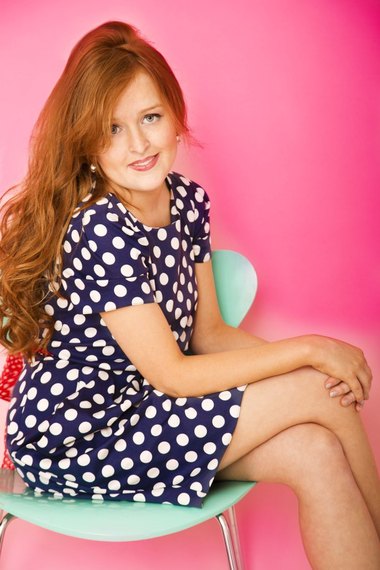
It's a mode of communicating to people who I am as a person, since my teenage years I used fashion as a way to allow people to see a portion of my personality and look past my disability. I believed if I wore quirky prints, bohemian inspired scarfs and striking colours I could allow people to appreciate me for the way I used style to represent the person I stood for and that I didn't allow my disability to mould me. I still adhere to this principal idea, although I use fashion as a way to enhance my confidence I also use it as a way to prove a point to wider society. I believe that through this small act of adopting my own style in my own way I am helping to educate people about sight loss by challenging the stigma that sight loss stops you from having fashion sense.
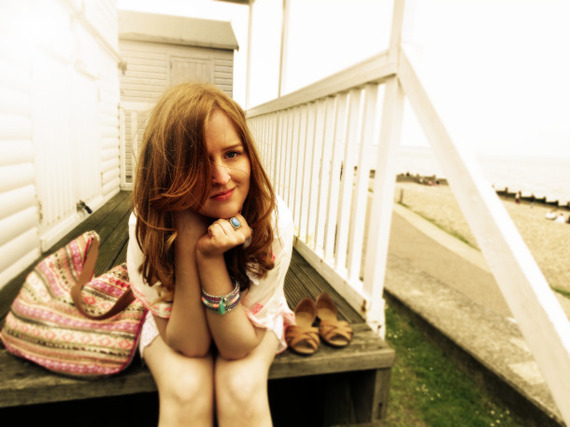
Whenever I write blog posts, share my outfit of the day images with my followers on Instagram or talk about my latest fashion finds on the high street some of my readers ask how I access fashion despite being visually impaired. Technology has expanded vastly over the last few years and the accessibility features and options open to people with visual impairments has grown along with it. I use a combination of Apple devices including my iPhone and Macbook with the built in accessibility features such as speak selection, zoom, colour contrast options and magnification apps to read fashion magazine features, browse the web for latest fashions, read blogs from other fashion bloggers, write my own blogs and view the images from catwalk shows. When I attend London Fashion Weekend every year I use a Monocular, which allows me to see things from long distance like details on outfits worn by the catwalk models. I use a camera which features a very powerful lens with a high magnification which helps me take clear photographs. I make full use of the technology and features available to me to be able to access fashion and style with my remaining vision and relay it to those who may not have sight themselves.
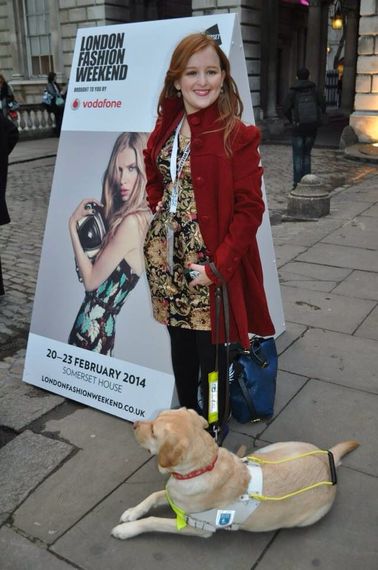
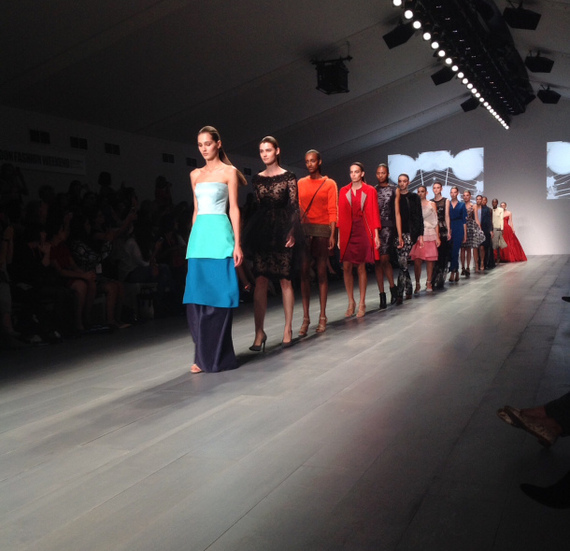
Yet, the fashion industry is not as inclusive or accessible towards people with disabilities as it could and should be. To date, a number of large online fashion retailers do not include detailed descriptions of garments or accessories. Fashion and style apps and magazine apps are not always made accessible to people who use accessibility features. Fashion websites are not always comparable with screen readers like Jaws and Dolphin. This is made more surprising considering that two million people in the UK alone live with sight loss according to a study conducted by the RNIB.
Fashion stores are not always fully accessible for wheelchair users or guide dog owners.
"It can be really difficult when you're a disabled shopper," one reader commented. "Especially when fashion shops regularly change their layout, it becomes really confusing when you have a visual impairment and you walk into the shop and you don't know where anything is because it's been changed."
There is still a vast lack of disability representation in the fashion industry as a whole, in the UK there are around 11.9million people living with a disability according to figures from research by Livability. Yet, this huge group of people is not being properly reflected by the fashion industry.
July 2016 marks my fourth year as a fashion and lifestyle blogger and although I have seen some major positive changes in the way society perceives disability, I must ask, when will the fashion industry start to embrace people like me who live with a disability?
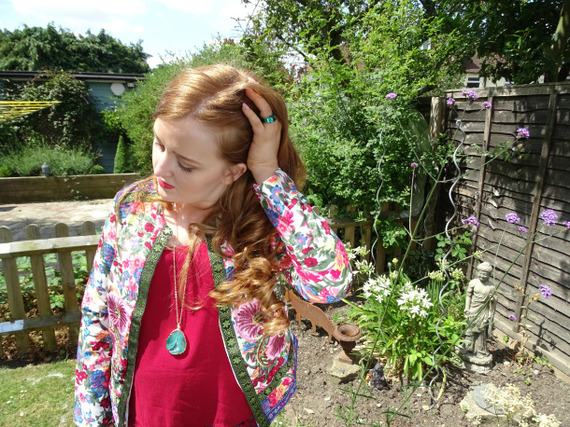
This February, HuffPost UK Style is running a month-long focus on our Fashion For All campaign, which aims to highlight moments of colour, size, gender and age diversity and disability inclusivity in the fashion and beauty world.
We will be sharing moments of diversity at London Fashion Week with the hashtag #LFW4All and we'd like to invite you to do the same. If you'd like to blog about diversity or get involved, email us here.